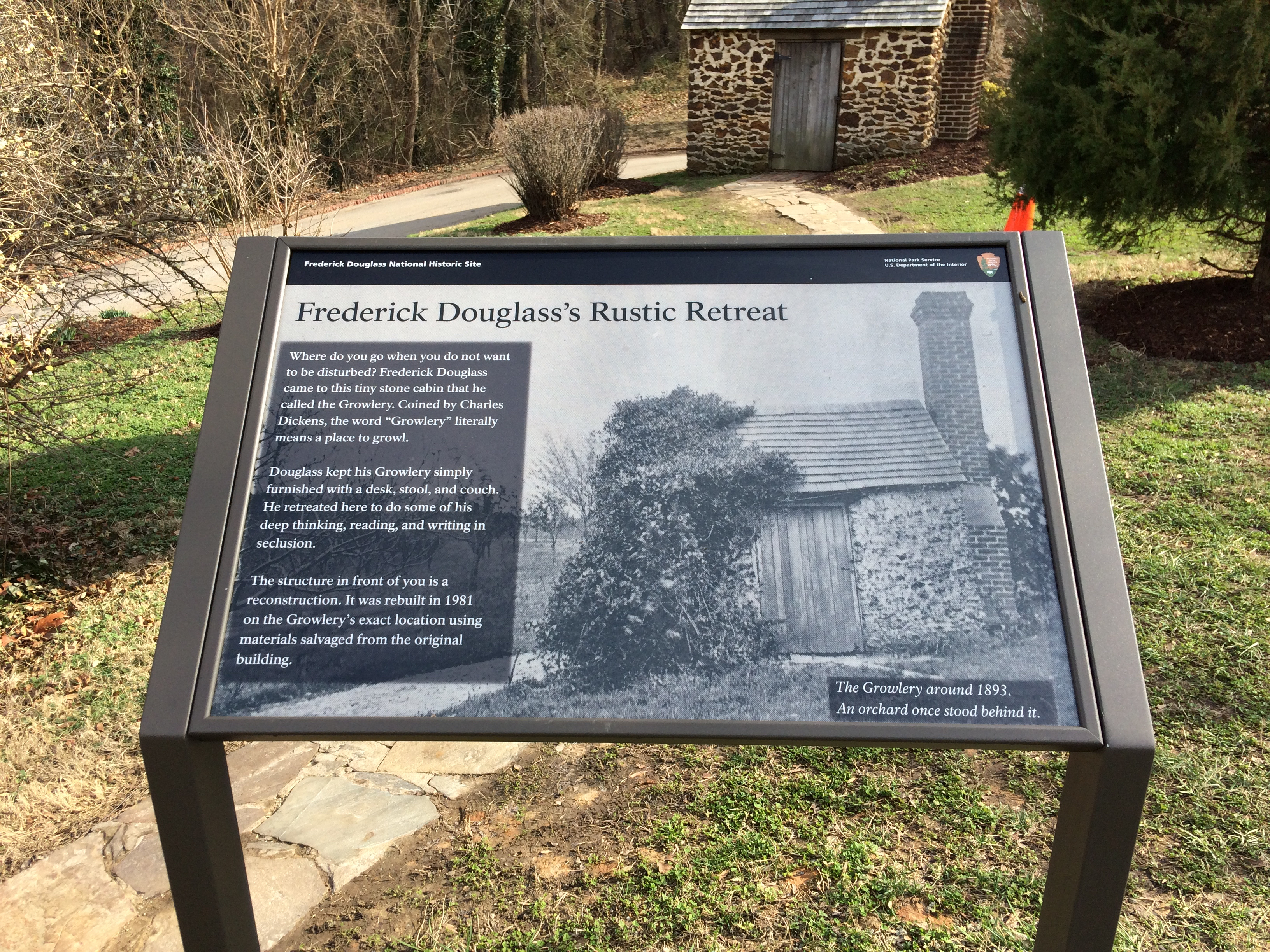Frederick Douglass’s Cedar Hill Home



I had to make a reservation to get into Frederick Douglass’s Cedar Hill home. Okay, that’s over-stating things. I wanted to make a reservation. Otherwise, what if I showed up and all ten spots on the National Park Service tour were taken? One thing would lead to another, and I’d be drowning my sorrows in cabbage and a patty at Caribbean Citations just when my waistline would be saying that’s not such a good idea.


But it turns out I was the only one on the Cedar Hill tour. That was super-perfect for me but unfortunate for the nine-person group that also reserved spots but didn’t show up. They missed out on that amazing feeling of being surrounded by a sense of history and actual objects that participated (at least peripherally) in events. Cedar Hill was never gutted as so many other historic homes and buildings have been. (Spoiler alert — the interior of Ford’s Theatre is a re-creation!) Seventy percent of Cedar Hill furnishings were in the house when Frederick Douglass lived there.
Mr. Barnes was my personal tour guide through Cedar Hill. What a treat! And what an effort on my part not to touch the furnishings!
A few years ago while I was consuming book after book of Civil War history, I read Narrative of the Life of Frederick Douglass. The book was published in 1845. Connecting with the horror Mr. Douglass describes in his first autobiography has always been hard — not hard to imagine, but hard to want to imagine. Plus, I don’t like to think about how the United States Constitution once legalized enslaving people or how in the 150 years since that changed, people in the U.S. still have to fight for basic rights.

I prefer to think about how good people make the world a better place. As one of those people, Frederick Douglass surrounded himself with other bold thinkers also bringing about positive change through sacrifice. When I read Narrative of the Life of Frederick Douglass, the person who really stuck out to me — after Mr. Douglass, of course — was his wife, Anna Murray-Douglass. In 1838, the future Mrs. Douglass gave the man she loved sailor’s clothing to disguise himself and part of her own savings so that he might escape enslavement, which he did. I was glad to see that the importance of the first Mrs. Douglass was clear at Cedar Hill even though she only lived there a few years. (Rosetta Sprague Douglass wrote an article about her mother, and it’s an interesting read.)
The visit to Frederick Douglass’s home helped me understand there was a at least a bit of whimsy in the man. One example: I quite enjoyed the idea of his rounded-lid traveling trunks. They would always have to be placed atop the trunks of others when he traveled, thus giving Douglass easier access to his things and quicker unloading. No doubt, they were banned on various modes of transportation. People would have seen those rounded lids coming for a mile, and Mr. Douglass clearly didn’t care. That makes me smile.

Mr. Douglass’s Growler (or “man-cave” as Mr. Barnes suggested in the more modern vernacular) was another bit of fun. The Growler was a tiny brick shack set a couple hundred feet back from the main house. I love the idea that a world-renowned figure like Mr. Douglass might set up a small space just for himself — maybe to write, maybe to have a quiet moment, maybe to read — who knows? The Growler reminded me of my favorite cube-farm desk. My colleagues at the time thought that cube was ridiculous. It had just enough room for me and one other person but only as long as that other person kept their legs outside of the cube and in the cube-farm hallway. I loved that space. It was perfect for keeping out the riffraff, and I didn’t even have to physically eject them. Even the haters knew that my cube was only big enough for one person. Maybe Mr. Douglass was writing in his Growler. Maybe he was thinking. Maybe he was reading. Or maybe he was just trying to keep out the riffraff.

My favorite bit of fun had to do with why Mr. Douglass chose to build Cedar Hill where he did. I could appreciate that the view was spectacular and that the breeze might have helped with the heat and the bugs. But a two-mile commute into work including a river crossing must have been more than the average well-off man of the 1880’s was interested in tolerating. I asked Mr. Barnes if he knew why Mr. Douglass chose the location. The twinkle in Mr. Barnes’s eye was unmistakable. He said the answer lay in the fact the locals didn’t want Mr. Douglass in their neighborhood. That made me smile, too. Building a house atop the highest hill in a neighborhood that tried to keep you out sounds like the kind of fun I appreciate.

My Frederick Douglass questions came at a price. I left Cedar Hill with homework from Mr. Barnes, who strongly suggested I consult numerous additional resources like the Library of Congress’s Frederick Douglass collection, Douglass’s three additional autobiographies, and Leigh Fought’s Women in the World of Frederick Douglass. My local library had a copy of Fought’s book, and I snatched it up. But worry not! The D.C. Public Library has twenty more copies for everyone else!
More information about Cedar Hill and Frederick Douglass can be found here on the National Park Service website. Reservations are only required for groups of ten or more. The only way to see the inside of Cedar Hill is to join one of the tours, and I highly recommend a visit.